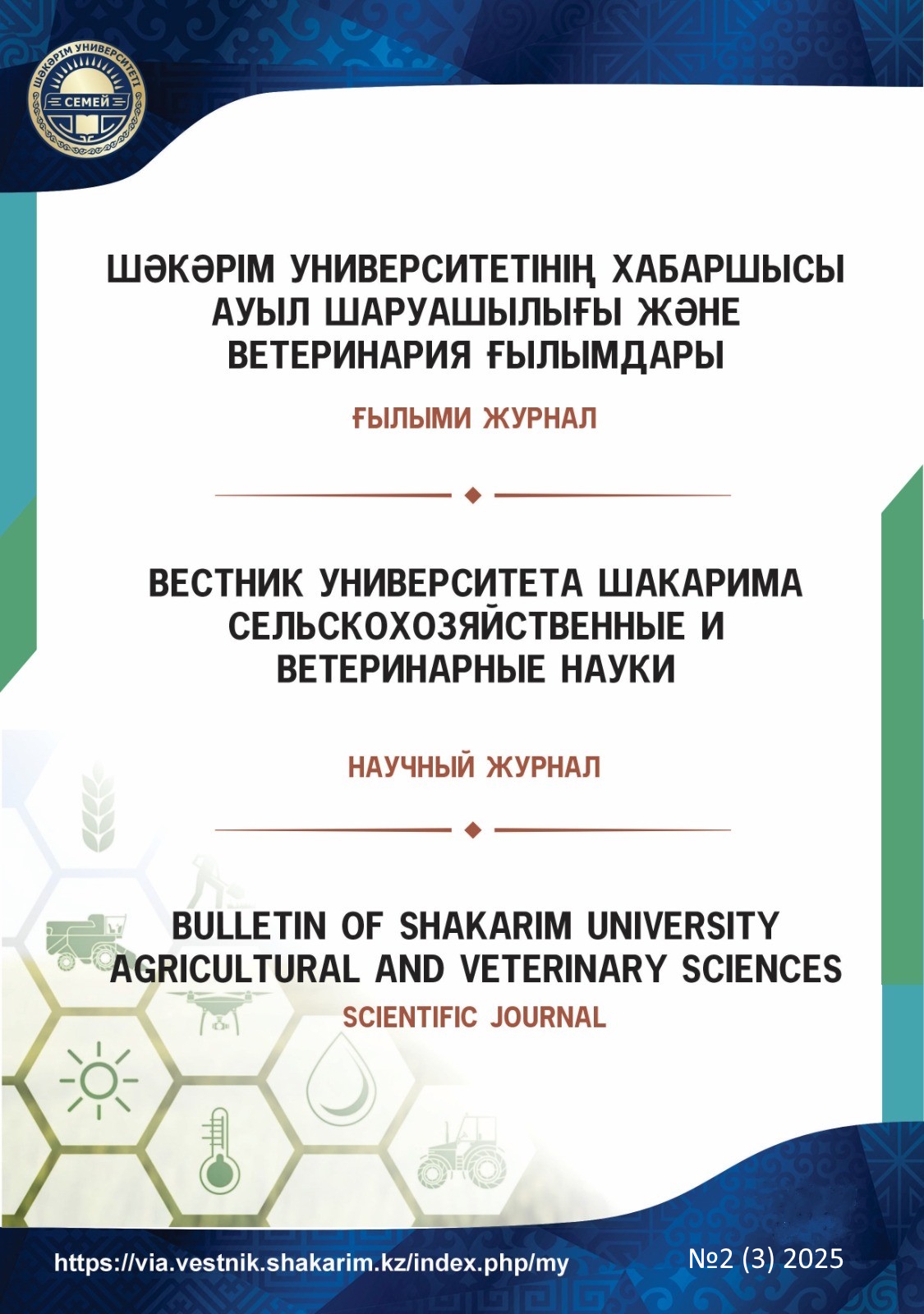PHENOLOGY OF DEVELOPMENT AND PRODUCTIVITY OF MALE CROPS IN THE CONDITIONS OF ABAY REGION OF KAZAKHSTAN
Keywords:
male breeding, feed base, animal husbandry,phenology of development, germination.Abstract
This research work is devoted to the study of the development and productivity of the yerkeshop crop in the Abay region of Kazakhstan. Yerkeshop is a plant with a high nutritional value, which is an important agricultural crop, it is often used as fodder in animal husbandry. In the course of the study, taking into account the climatic conditions and soil features of the Abay region, the phenological stages of growth and development of erkeshop, the level of productivity and the possibilities of its adaptation to local agroecological conditions are considered. It also provides information on agrotechnical measures and fertilizers, irrigation methods and effective ways of crop management, which are used to increase the yield of Yarrow. This research paper provides local agronomists and farmers with important theoretical and practical information that will help them effectively grow the yerkeshop crop and increase its productivity. It will also consider agrotechnical methods, fertilizers and irrigation technologies used to increase the yield of erkeshop. The data obtained through the adaptation of the crop to the region, environmental conditions and agronomic practices are analyzed in the course of the work, and effective ways to increase productivity are proposed. This study will allow farmers of the region to use effective methods of growing yerkeshop crops and contribute to the sustainable development of Agriculture.
Downloads
Downloads
Published
Issue
Section
License
Copyright (c) 2025 The editorial staff of the journal follows the copyright law of the Republic of Kazakhstan and relevant international agreements. The authors retain their copyright and provide the journal «Bulletin of Shakarim University. Series of Historical Sciences» right of first publication of the manuscript. The author has the right to copy and distribute the material in any medium and in any format, subject to appropriate reference to the journal. Readers and users can freely copy, distribute and adapt the material, provided that the author of the work is indicated and a link to this journal is provided. Copyright presupposes the integrity and responsibility of each co-author who made a significant contribution to the writing of the article. The author has the right to store his publications in an institutional or other repository of his choice, provided he provides the appropriate link to the journal’s website.

This work is licensed under a Creative Commons Attribution-NonCommercial 4.0 International License.
Copyright presupposes the integrity and responsibility of each co-author who made a significant contribution to the writing of the article.
The author has the right to store his publications in an institutional or other repository of his choice, provided he provides the appropriate link to the journal’s website.




